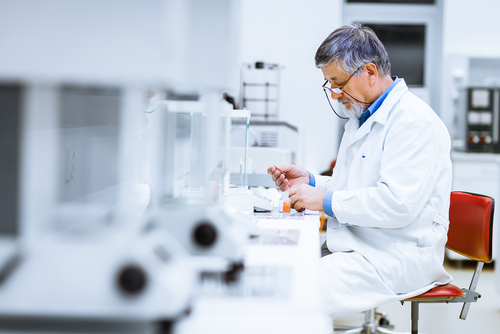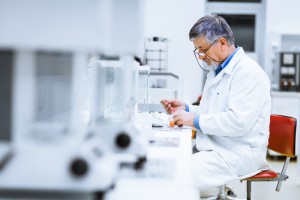Novel Cystic Fibrosis Treatment Shows Promise Against Infections
Written by |

 Synedgen, Inc. will present recent study results on the successful application of the company’s novel polymer PAAG for treating Cystic Fibrosis. The data is compiled in two posters entitled “PAAG decreases viscosity and Improves Transportability of Cystic Fibrosis Mucus In Situ” and “Novel Biopolymer Mucolytic PAAG Prevents and Treats Biofilms formed by Cystic Fibrosis Clinical Isolates In Vitro, and Potentiates Tobramycin, Aztreonam, and Vancomycin Activity Against Pseudomonas Aeruginosa and MRSA” which will be presented at the National Cystic Fibrosis Meeting in Atlanta, on October 8-11, 2014.
Synedgen, Inc. will present recent study results on the successful application of the company’s novel polymer PAAG for treating Cystic Fibrosis. The data is compiled in two posters entitled “PAAG decreases viscosity and Improves Transportability of Cystic Fibrosis Mucus In Situ” and “Novel Biopolymer Mucolytic PAAG Prevents and Treats Biofilms formed by Cystic Fibrosis Clinical Isolates In Vitro, and Potentiates Tobramycin, Aztreonam, and Vancomycin Activity Against Pseudomonas Aeruginosa and MRSA” which will be presented at the National Cystic Fibrosis Meeting in Atlanta, on October 8-11, 2014.
Cystic Fibrosis (CF) is characterized by accumulation of thick mucus, particularly in lungs and gastrointestinal organs, and is associated with recurrent infections that culminate in difficulty in breathing and escalate to life-threatening symptoms, as pulmonary failure.
Now, researchers from Synedgen are presenting a novel approach to treat CF patients. In the first poster, researchers evaluated how the PAAG polymer impacts human bronchial epithelial cells in CF patients. Synedgen’s researchers found that PAAG significantly reduced liquid viscosity of the surface of these cells as well as improved cilia movement, when compared with the controls. Despite the study performed in vitro, these cells mimic the natural activity occurring in lungs, with cilia expelling mucus out of the lungs, known as mucociliary clearance.
[adrotate group=”1″]
In the second poster, Synedgen researchers evaluated the effect of PAAG polymer on biofilm (groups of microorganisms that attach to a surface) from CF patients, specifically Pseudomonas aeruginosa (the most common infection in CF patients), Methicillin resistant staphylococcus aureus (MRSA), and Burkholderia cepacia, also common in CF patients. Notably, all these microorganisms were reported to have developed resistance to antibiotics. Upon 1 hour of PAAG treatment, a significant decrease in B. cepacia and MRSA biofilm was observed. Combining PAAG with the antibiotic Tobramycin, commonly used in CF patients, the antibiotic activity was greatly increased. The same was observed combining PAAG with two other antibiotics – Vancomycin (used to treat MRSA biofilm) and Aztreonam (used to treat Pseudomonas aeruginosa biofilm).
Synedgen President Shenda Baker commented, “The observation that PAAG disrupts both mucus and biofilms, making them easier to clear from the lungs and potentiating antibiotic activity, could provide tremendous benefit to CF patients. Our hope is that by keeping the airways clear of infection, we can improve the course of this progressive lung disease.”






